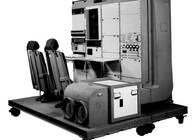New GPS Civil Signal Rollout Will Aid Spoofing Countermeasures
08.04The U.S. Air Force is set to start early implementation of the long-anticipated GPS Civil Navigation (CNAV) message at the end of this month, and will use the process to help develop new countermeasures against spoofing.
New GLONASS-M Satellite Begins Commissioning
01.04A modernized GLONASS satellite launched on last week has begun its commissioning phase in slot 18 of the Russian GNSS constellations orbital plane 3. It was the first successful GLONASS launch since the loss of three spacecraft in the crash of a Prot...
Global Positioning System (GPS)
24.08Does the United States military’s involvement with GPS make you feel more or less secure? Tell us what you think and leave a comment below. Pictured here is the first military GPS five-channel receiver. It weighed 270 pounds! Credit: Rockwell Collins...
LocataTech
28.07Locata has invented a new, completely autonomous positioning technology that creates terrestrial networks that function as a “local ground-based replica” of GPS-style positioning. Locata is not designed to replace GPS; it is a local extension and ex...
Reykjavik Víking Maritime Museum
25.07Been biking around Iceland recently and also spent a week in Reykjavik where the Reykjavik Viking Maritime Museum was one of the highlights. Found a Loran A navigation receiver, somebody feels nostalgic?
Boeing Gains FAA Approval to Fly Advanced Navigation Procedures on 787
27.06Boeing [NYSE: BA] has received FAA approval to fly Required Navigation Performance - Authorization Required (RNP AR) procedures on the 787 fleet. Operators that fly RNP AR procedures significantly reduce fuel burn, emissions and airport congestion by...
Air Force Proposes Dramatic Redesign for GPS Constellation
06.06Momentum is building to shift to a new constellation architecture that uses two types of GPS satellites — full-capability GPS III satellites and new lean spacecraft called NavSats.
Galileo Satellite Achieves High Earth Orbit Positioning with GPS
17.04When the European Space Agency launched its Galileo In-Orbit Validation Element-A (GIOVE-A) satellite in 2005, its main mission was to transmit Galileo test signals that secured the system’s frequencies, evaluate hardware under space environmental co...
Galileo on Its Own
30.03In a milestone for Europe’s GNSS program, the European Space Agency reports the first successful 3D position determination using only Galileo satellites.
First Galileo IOV Satellite Producing Full Spectrum of Signals
04.01Europe’s first Galileo satellite appears to be functioning as expected, transmitting test signals received by the European Space Agency’s ground station in Redu, Belgium, across the whole of its assigned radio spectrum, ESA reports.
Glonass navigation system beefed up with Soyuz launch
29.11Another spacecraft to reinforce Russia's fleet of Glonass navigation satellites lifted off Monday November 29th from the Plesetsk Cosmodrome on a Soyuz booster.






